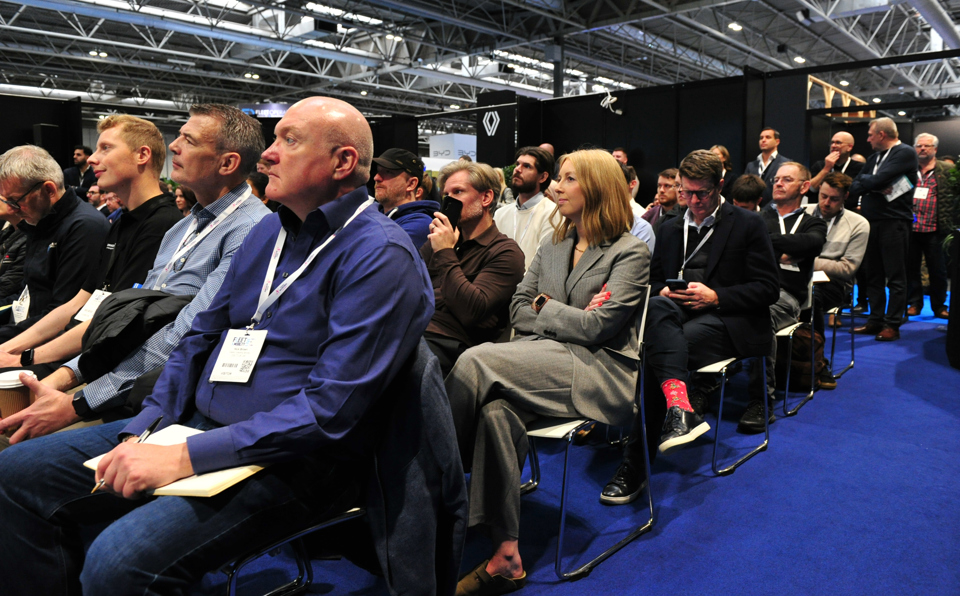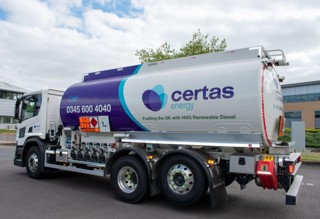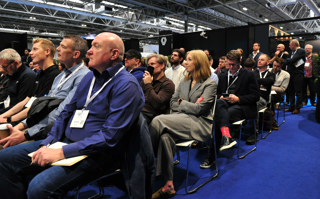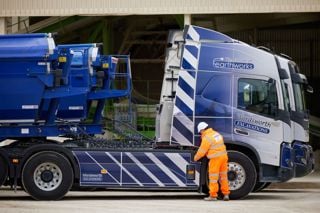Using a renewable alternative fuel such as HVO (hydrotreated vegetable oil) for difficult-to-electrify vehicles can have significant environmental and cost benefits for fleets.
During the The Right Fuel, Right Vehicle, Right Time seminar at Fleet & Mobility Live, chaired by Lorna McAtear, head of fleet at National Grid, delegates heard trials carried out by the London Borough of Hackney and Transport for London found the fuel offers a carbon efficiency of 90-92% compared to forecourt diesel.
Norman Harding, fleet manager for the London Borough of Hackney, which operates 610 vehicles, said: “Around about 2017, I heard of this product called HVO, did a bit of research on it and everything seemed so good, it was almost unbelievable.”
The council worked with TfL to create a test cycle to represent a multi-drop parcel delivery round for a truck, and first carried out baseline testing using normal forecourt diesel.
It then cleaned all the filters, cleaned out the fuel system and filled up with 100% HVO.
“We ran the same test again and got a 12% carbon reduction and 69% NOx reduction at the tailpipe,” said Harding. “That is phenomenal by anyone’s standard and bearing in mind the fuel is made from a waste product in the first place, it’s 80% carbon efficient before it goes through the combustion process, and 12% carbon efficient after the combustion process.
“You’re looking at 90-92% carbon efficiency and that, for me, was a win-win. I bought into it lock, stock and barrel, and almost all my diesel vehicles, my tractors, buses and agricultural plant is all running on 100% HVO.
“I’ve got a small number of light commercial vehicles that are stationed too far away from where my bulk tanks are, so they still run on forecourt diesel, but even so I’m still going through 1.2 million litres of HVO a year, saving 2,500 tonnes of CO2 a year.”
As well as its HVO and diesel vehicles, London Borough of Hackney also operates 106 electric vehicles and has been carrying out a study into the feasibility of transitioning its HGVs to electric. “The work we’ve done suggests it is going to be expensive and there’s a lot of parking displacement as a result of putting in charging infrastructure,” said Harding.
Fossil fuel free by 2030
John Lewis has also embraced the use of alternative fuels as it looks to transition to a fossil fuel-free fleet by 2030.
“Our strategy is to use renewable electricity to power all of our cars, vans and light trucks, and biomethane for heavy trucks,” said Justin Laney, partner & general manager, central transport, at John Lewis Partnership.
“We currently have 420 heavy trucks – around 70% of our fleet – running on biomethane and those give us a reduction in carbon of between 80% and 90%.”
He said John Lewis is also saving money by using biomethane instead of diesel. “The maintenance cost is a bit higher, but the TCO (total cost of ownership) is still positive. They also reduce noise by about half and that becomes really important when you’re making urban deliveries.”
Laney said the company is also beginning to tackle the emissions created by its refrigerated trailers – about 20% of the diesel used by its heavy truck fleet is consumed by powering those fridges.
“We are starting to overcome that by starting to fit trucks with additional alternators that then power their fridges as they drive along, and when the vehicles are parked in a depot, we’re plugging the fridges into the mains electricity, rather than using the diesel generator.
“That’s been very successful – in the first half of this year, we’ve saved about 1,000 tonnes of CO2 and just over £400,000.
“The next step will be to use HVO biodiesel in those fridges so we can then move completely away from fossil fuel.”
Laney added decarbonising a fleet is not just about the fuel choice as there are also operational changes which will have a significant impact.
“It’s about reducing the energy we need for our transport system, so that’s about doing fewer miles through things like bigger vehicles where we make sure they are full, collaborating to eliminate empty running and then, when we’ve done that, it’s about improving the efficiency of those vehicles, so using telematics to coach drivers into better driving styles, maybe using aerodynamics and low rolling resistance tyres,” he added.
“These will mean the vehicle needs less energy to push it along, so we can then move to smaller engines and give ourselves further savings. There’re a kind of virtual circle here in reductions in energy.”
The full debate can be watched below
























Login to comment
Comments
No comments have been made yet.